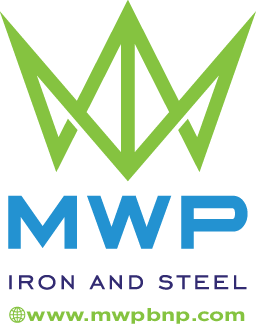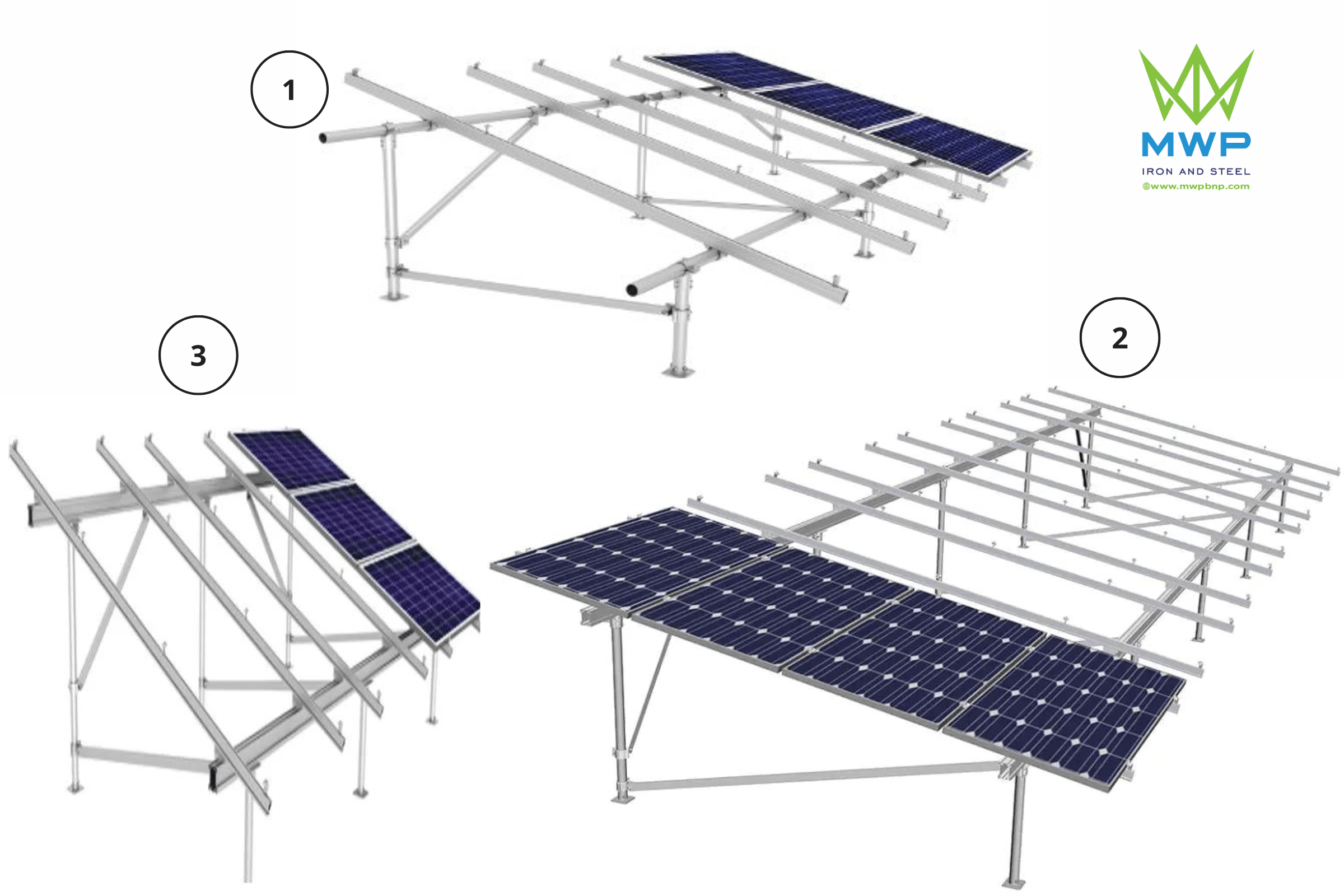Solar Panel Structure:
Solar energy is a clean, renewable resource that can significantly reduce your reliance on fossil fuels and lower your electricity bills. However, to capture the sun’s energy and convert it into usable electricity, you’ll need a solar mounting structure. A critical component of any solar panel system is the structure that supports and positions the panels for optimal sunlight exposure.
This article dives into the world of solar panel structure, exploring different types, their applications, and factors to consider when choosing the right one for your solar energy needs.
Why are Solar Panel Structures Important?
Solar panels need to be positioned at a specific angle to maximize sunlight absorption throughout the day. A well-designed and installed solar panel structure ensures:
- Optimal Sun Exposure: The structure tilts the panels towards the sun, capturing the maximum amount of sunlight for efficient energy generation.
- Durability and Stability: The structure withstands various weather conditions, including high winds, snow loads, and seismic activity.
- Safety: A secure structure prevents panels from falling or becoming damaged, protecting people and property.
- Efficiency and Maintenance: A well-designed structure allows for easy access to panels for cleaning and maintenance.
Solar Steel Structures – Power Up Your Home with Our Top-Tier Solar Panel Structure!
Types of Solar Panel Structures
The type of solar panel structure you choose depends on several factors, including:
- Roof type: Different structures are suitable for flat roofs, pitched roofs, and metal roofs.
- Ground space availability: Ground-mounted structures are ideal for open spaces, while rooftop structures are used on buildings.
- Desired functionality: Some structures allow for panel tilt adjustment for seasonal optimization.
Roof-Mounted Solar Panel Structures
- Penetrated Roof Mounts: These are the most common type of roof-mounted structure. Mounting rails are secured to the roof rafters using fasteners that penetrate the roofing material. This method provides a very secure attachment, but requires professional installation and may void your roof warranty.
- Non-Penetrated Roof Mounts: These structures use clamps or brackets that attach to the existing roof structure without penetrating the roofing material. This method is ideal for maintaining roof integrity and may be compatible with some roof warranties. However, it might not be suitable for all roof types or withstand heavy wind or snow loads.
- Ballasted Roof Mounts: These structures rely on weighted blocks to hold the panels in place. This method eliminates roof penetration and is suitable for flat roofs. However, it may require additional reinforcement on the roof structure to support the weight of the ballast.
Ground-Mounted Solar Panel Structures
- Ground Screw Mounts: These structures utilize screw piles anchored into the ground to support the mounting rails. They are a popular choice for open spaces and offer good adjustability but require a soil analysis to ensure proper anchoring.
- Pole Mounts: These structures use poles driven into the ground or embedded in concrete footings to support the solar panels. They are suitable for uneven terrain and offer flexibility in panel positioning but may require significant excavation for installation.
- Tracker Mounts: These innovative structures feature one or two-axis trackers that automatically adjust the tilt of the solar panels throughout the day to maximize sun exposure. This can significantly increase energy production but are generally more complex and expensive than fixed-tilt structures.
| Feature | Roof-Mounted | Ground-Mounted |
|---|---|---|
| Roof Penetration | Required (Penetrated) or Not Required (Non-Penetrated) | Not Required |
| Installation Complexity | Moderate | Moderate to High (depending on type) |
| Space Requirement | Limited to Roof Area | Open Space Required |
| Cost | Generally Lower | Generally Higher |
| Suitability | Pitched or Flat Roofs | Open Areas |
Choosing the Right Solar Panel Structure
Selecting the optimal solar panel structure involves considering several factors:
- Compatibility with Your Roof or Land: Ensure the structure aligns with your roof type or ground conditions.
- Local Building Codes and Regulations: Obtain permits and comply with local regulations regarding solar panel installations.
- Sun Exposure: Choose a structure that allows for optimal panel positioning for maximum sunlight throughout the year.
- Durability and Wind/Snow Load Requirements: Select a structure that can withstand the expected weather conditions in your area.
- Budget: Consider the upfront cost of the structure, installation, and potential maintenance needs.
- Aesthetics: Choose a structure that complements the visual appeal of your property, especially for roof-mounted systems.
Consulting with a qualified solar installer is crucial for selecting the most suitable structure for your specific needs. They can assess your site, analyze solar exposure patterns, and recommend the optimal structure type and configurations.
Additional Considerations for Solar Structures
Beyond the core factors mentioned above, here are some additional considerations when choosing a solar panel structure:
- Shading: Identify any potential sources of shade that may fall on the panels throughout the day, such as nearby trees or buildings. Opt for a structure that minimizes shading or allows for panel adjustments to avoid it.
- Maintenance Access: Ensure the structure design allows for easy access to the panels for cleaning and maintenance. This might involve considering walkways between rows for ground-mounted systems or choosing a roof-mounted structure with a safe cleaning method.
- Future Expansion: If you plan to expand your solar energy system in the future, choose a structure that can accommodate additional panels. This might involve selecting a modular structure or leaving space for future expansion during the initial installation.
- Material Quality: The structure’s material should be durable, corrosion-resistant, and able to withstand the elements. Common materials include galvanized steel, aluminum, and high-strength polymers.
Safety Considerations
Safety is paramount when installing and maintaining a solar panel system. Here are some key safety considerations for solar panel structures:
- Professional Installation: Ensure the structure is installed by a qualified solar installer who adheres to industry best practices and safety regulations.
- Electrical Safety: The structure’s design and installation should comply with electrical codes to prevent electrical hazards. This might involve proper grounding and proper cable management.
- Structural Integrity: Regularly inspect the structure for signs of wear and tear, loose connections, or corrosion. Address any maintenance needs promptly to ensure the system’s stability.
- Fire Safety: Choose a structure material with appropriate fire ratings, especially for roof-mounted systems. Local building codes might have specific requirements for fire safety in solar installations.
Conclusion
Solar panel structures are the foundation for harnessing the sun’s power and generating clean, renewable energy. By understanding the different types of structures, their applications, and the factors to consider when choosing one, you can ensure a safe, efficient, and long-lasting solar energy system. Remember, consulting with a qualified solar installer is crucial to determine the optimal structure type and configuration for your specific needs and location. With the right structure in place, you can unlock the full potential of solar energy and enjoy the benefits of a sustainable energy source for years to come.

